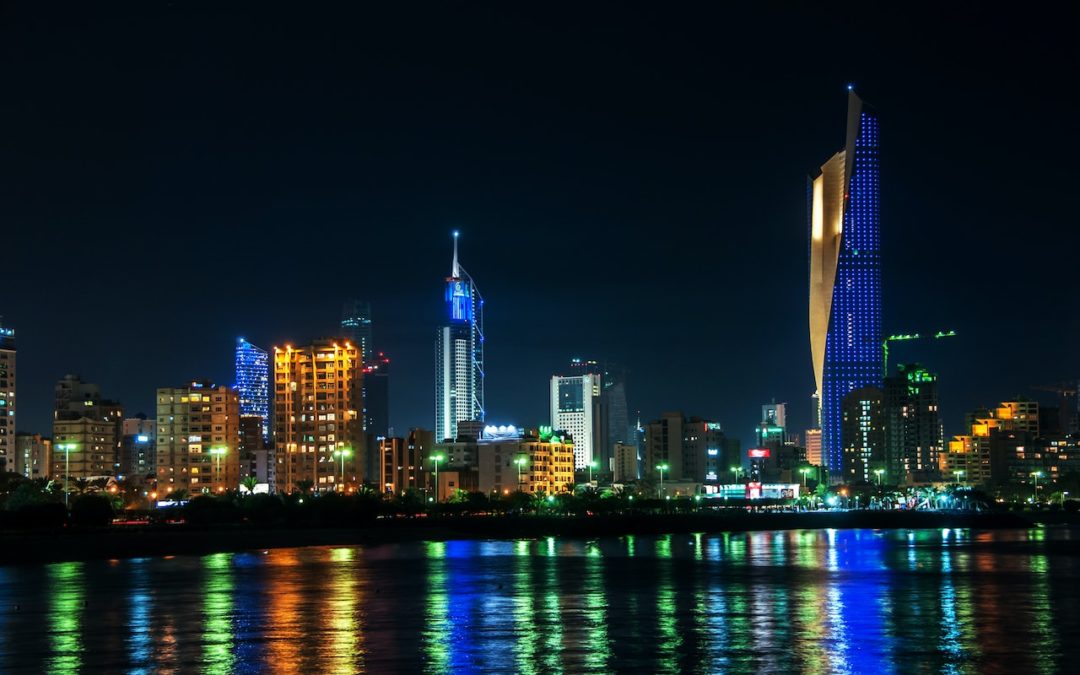Kuwait, a relatively small but developed welfare state situated near the northwestern part of the Arabian Gulf, recently announced a significant investment to boost its infrastructure and diversify its economy. The Kuwaiti Alanba newspaper, in July 2021, reported the government had allocated $65 billion to complete 18 major projects (14 public and four partnerships) covering infrastructure, environment, health, and power.
Among other projects, Kuwait intends to expand the Kuwait International Airport, develop and complete the trans-Kuwait rail network, and construct the master-planned, 250-square-kilometer Silk City which, once complete, is expected to transform the country into an international hub for finance, trade, and culture. This and other projects are part of a comprehensive effort to alleviate Kuwait’s economic reliance on the oil and gas sector.
The crown jewel of Silk City will be the 1-kilometer Burj Mubarak al-Kabir. The ambitious tower is expected to take more than two decades to construct and may not even ever come together considering the logistical and financial challenges. In the meantime, the Al Hamra Tower in Kuwait City is the tallest building in the country. Here are six amazing facts about it you need to know:
1. It Is Currently the Tallest Building in Kuwait
Construction on the 1,358-foot tower began in late 2005 and took six years to complete. The tip of the tower reaches that peak height, while the top floor is situated at about 1,207 feet high. Al Hamra Tower has 83 floors, three of which are located below ground, and is by far the tallest building in Kuwait. The Arraya Tower and NBK Tower, tied for the second-tallest in the country, both extend 980 feet into the sky.
Chicago, Illinois-based Skidmore, Owings & Merrill designed the impressive structure. The renowned architectural firm has been involved with the construction of some of the world’s tallest towers, including One World Trade Center in New York City and the Burj Khalifa in Dubai. It also designed the Willis Tower and John Hancock Center in Chicago.
2. It Is the 34th Tallest Building in the World
The Al Hamra Tower might be the tallest building in Kuwait, but it is nowhere near the tallest building in the world. In fact, it is only about half of the height of the building that holds that distinction (the Burj Khalifa). Two other towers, Merdeka 118 in Malaysia and Shanghai Tower in China, are taller than 2,000 feet. The Al Hamra Tower is the 34th-tallest building in the world.
3. It Is the Tallest Carved Concrete Skyscraper
While it might not be among the tallest buildings in the world, the Al Hamra Tower does hold the distinction of being the tallest carved concrete skyscraper. Flared walls extend up the tower from its southwest and southeast corners. Wrapped glass and Jura limestone was utilized to protect the building’s exterior from overheating.
Other impressive features of the tower include its rooftop restaurant and observation deck and the 78-foot-high lobby that visitors might notice isn’t supported whatsoever by columns.
4. It Had a $500 Million Price Tag
Despite its height and impressive design, the Al Hamra Tower was built for a relatively affordable price tag of $500 million. The Burj Khalifa, twice the height of the Al Hamra Tower, was constructed for $1.5 billion, three times the price tag of Kuwait’s tallest building. The Great Mosque of Mecca, also known as Masjid al-Haram, in Saudi Arabia is the world’s most expensive building with an estimated construction cost of $100 billion.
5. It Received Many Awards
Not surprisingly, the Al Hamra Tower has received several design awards, both during its construction and after its completion. Miami Architectural Bienal awarded it Bronze Unbuilt Projects status in 2007. The following year, MIPM/Architectural Review gave it Future Project Awards for Tall Buildings and Overall.
Al Hamra Tower also won the Chicago Athenaeum American Architecture Award and International Architecture Award for Best New Global Design in 2008. It earned a Cityscape award in 2010 and shared the Emporis Skyscraper Award with Etihad Towers in Abu Dhabi and 8 Spruce Street in New York in 2011.
6. It Was Named One of TIME Magazine’s 50 Best Inventions in 2011
The impressive and unique design of the Al Hamra Tower garnered it inclusion on TIME magazine’s 50 Best Inventions list in 2011. Other notable inventions on the list included preemptive policing technology, the light field camera, and the Apple iPhone digital assistant Siri.
Waxing poetic about the tower’s carved design, TIME noted: “The tower needed a shield from the blistering Arabian Desert to the south while preserving sweeping views of the Persian Gulf to the north, so architects Skidmore, Owings & Merrill wrapped the tower in glass and added a sweeping cut up the south facade covered in limestone.
“The rock face reflects the desert heat with a distinct salute to the unrelenting Middle Eastern sun. The aesthetic 90-degree curve traces the sun’s path across the sky and is punctuated by glass wings at the top, making al-Hamra seem to rise ever higher.”

